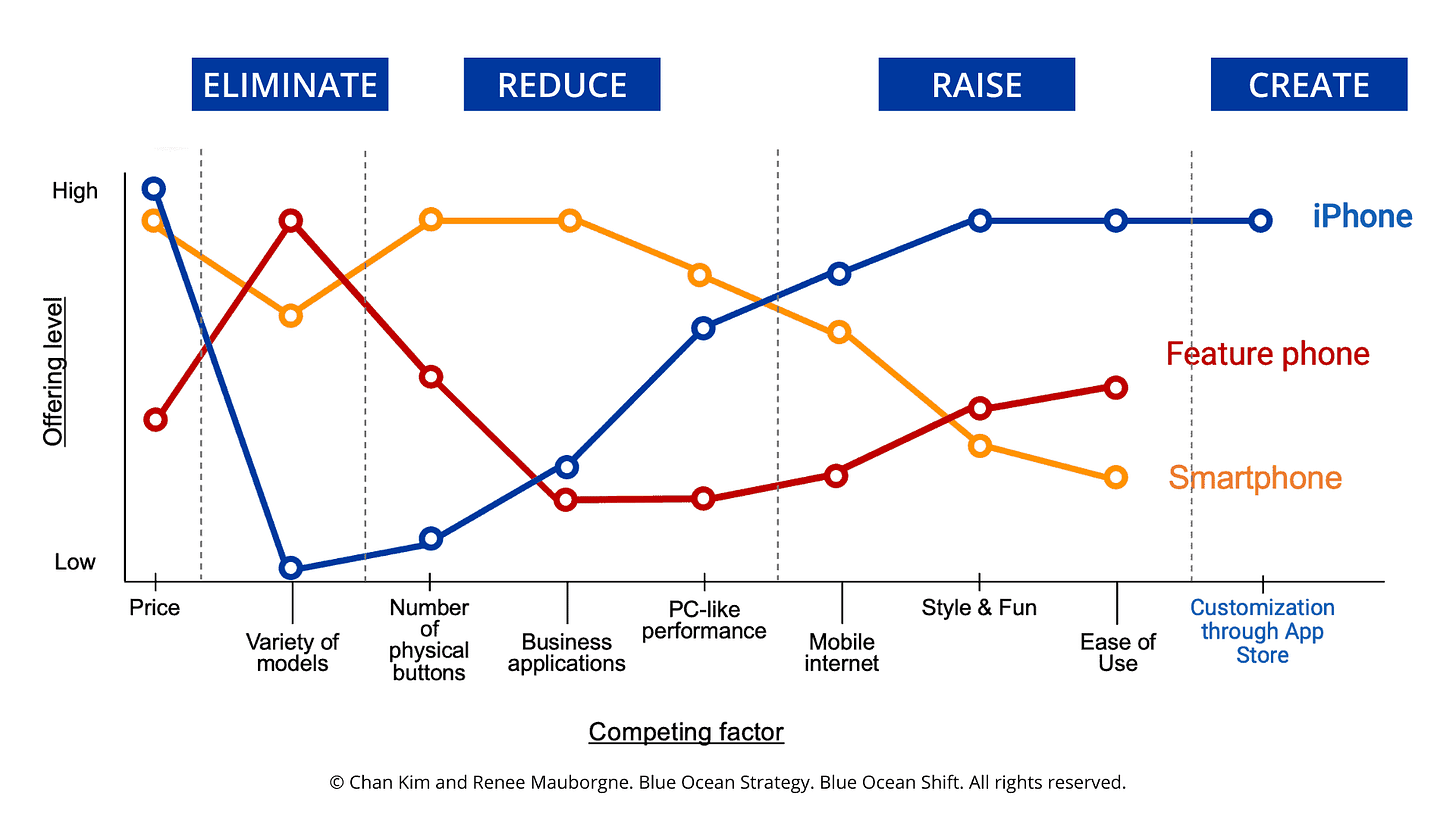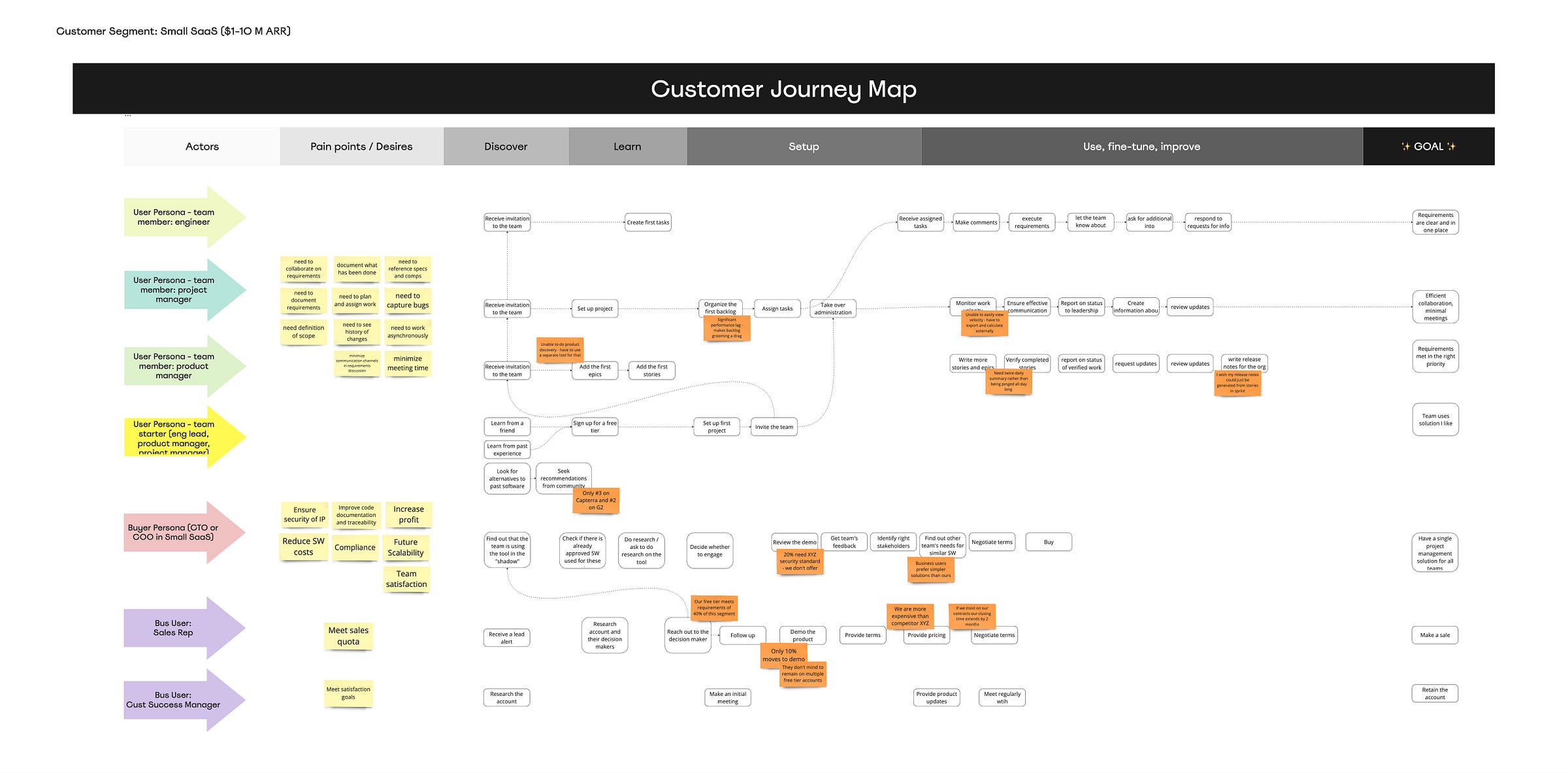Crafting Winning Strategies - Part Two
Insights and their practical application: from Rumelt, Martin, and Blue Ocean Strategy
Last week, I discussed the synergies between Roger Martin’s work and the tools offered by Blue Ocean Strategy. This combination forms a practical and repeatable framework for setting a strategy, which can otherwise be a theoretical and uncomfortable endeavor. Here's a recap: Blue Ocean Strategy tools can help answer the first three out of five questions in Martin’s Strategy Cascade:
What's your winning aspiration? This involves identifying what you will eliminate, reduce, raise, and create.
Where will you play? This is about expanding your market using Blue Ocean Strategy.
How will you win in your chosen field? This involves redefining your market positioning.
The remaining questions focus on identifying necessary capabilities and management systems.
This week, let's make it more practical by exploring how you, as a team, can answer these questions. Why do you want to go through this process as a team? Because you will need expertise and buy in of your fellow-leaders.
Below is a workshop layout to guide you through the process. But first, a brief introduction to Blue Ocean Strategy:
It is a framework designed to help businesses escape highly competitive markets (Red Oceans) by breaking away from industry norms and creating a new market space (Blue Ocean). One of the key tools of the Blue Ocean Strategy is the Strategy Canvas, where the company is mapped against key competitors in how they perform against the key factors of competition. Here is an example of a Strategy Canvas of Apple iPhone vs its competitors in early 2000:
Workshop Preparation
Assemble the Team: Form a team of up to 7 key stakeholders and subject matter experts. These should be individuals whose buy-in is essential for strategy implementation and who have deep insights into customer needs, operations, and critical capabilities.
Map the Blue Ocean Strategy Canvas: Identify competitive factors for you and your 4-5 critical competitors. For example, in project management software, these factors might include price, ease of onboarding, and user experience.
Conduct Research: Gather or conduct research to understand customer priorities around these competitive factors.
Create a Business Map: Develop a visual representation of your business and the players that impact it, layered with analytics and known challenges. (See an example below)
Team Preparation: Schedule one-on-one meetings to discuss the workshop's objectives and principles, introduce Blue Ocean Strategy, review the business map, and review the strategy canvas with feedback.
Establish Purpose and Policies: Define practical goals and guiding policies. This may require a separate workshop to develop clear and actionable statements.
Here is an example of a business map of a made-up project management software:
Play to Win in the Blue Ocean Workshop
I suggest to use these three powerful tools from the Blue Ocean Strategy to answer Martin’s questions:
What's your winning aspiration?
Where will you play?
How will you win in your chosen field?
But start by sharing all pre-collected information with the team. Encourage participants to review, take notes, and ask questions using sticky notes for clarity and engagement.
Uncovering Unaddressed Pain Points
Goal: Identify customer pain points not currently addressed by the industry.
Exercise: Have the team fill out the map by stepping into the buyers' shoes and considering their entire experience from discovery to disposal.
Tool: Buyer Utility Map from Blue Ocean Strategy
© Chan Kim & Renée Mauborgne. All rights reserved.
Facilitation Directions:
On the Buyer Utility Map, identify current industry focus (most of the time, companies only focus on some of the phases of the Buyer Utility - so many of the phases will be empty). In practice: have your participants put a contrast sticky with their rationale behind why they made that choice.
Then using red stickies, identify pain points in other phases, detailing the pain on the sticky.
Vote for the three biggest pain points on the map.
Resetting Market Boundaries
Goal: Expand or shift the current market to appeal to those who are not yet being fiercely competed over.
Exercise: Brainstorm opportunities to expand the market along the suggested paths.
Tool: Blue Ocean 6 Paths Framework:
© Chan Kim & Renée Mauborgne. All rights reserved.
Facilitation Directions:
Brainstorm opportunities for expansion along each of the paths.
Industry: Consider alternative industries and potential market fits.
Strategic Group: Identify new strategic groups within the industry.
Buyer Group: Explore engaging different buyer groups, such as influencers, purchasers, or users.
Scope of Product/Service: Analyze the context of usage and associated pain points.
Functional/Emotional Orientation: Consider appealing to different orientations by addressing social jobs.
Time and Trends: Discuss current trends and their potential advantages.
Use dot-voting to select the most promising opportunities for market expansion. The decider will finalize the top three market boundary resets.
Reviewing and Reflecting
Allow time for the team to review all previous work, including the existing Blue Ocean Canvas and research findings.
Redrawing the Blue Ocean Canvas
Goal: Redraw the “to-be” Blue Ocean Canvas that moves the business into the blue ocean and provides differentiation
Exercise: Collaborative redrawing of the canvas
Tool: Blue Ocean Strategy Canvas
Facilitation Directions:
Color-Coded Sticky Notes: Distribute four colors of sticky notes to represent the Eliminate-Reduce-Raise-Create framework:
Red: Eliminate
Blue: Raise
Yellow: Reduce
Green: Create
Collaborative Mapping: On a copy of a current canvas, under each competitive factor, team members place a sticky note of the appropriate color with a justification explaining why they believe this competitive factor should be eliminated, raised, or reduced. They add green stickies to the right of the canvas with proposed new competitive factors that need to be created. Encourage a balance between creating/raising and reducing/eliminating factors.
Curve Redrawing: Each participant creates their proposed curve and presents it to the team, explaining their rationale.
Final Selection: Conduct a dot-voting session to choose the most compelling curve. The decider will draw the final version of the map, articulating the strategic position.
Conclusion
By completing these exercises, your team has effectively addressed the key questions of strategy setting:
What's your winning aspiration? You aim to expand your market by offering new value to a newly identified audience.
Where will you play? Your focus will be on this newly defined market.
How will you win in your chosen field? You plan to offer unique value that others do not provide, by eliminating factors that are less important to your audience.
The next step is to assess your capabilities and adjust your aspirations or strategic curve to ensure alignment with your strengths. This will involve creating a detailed execution plan for the strategy. I will explore these aspects further in my upcoming posts.
Let me know if this is something that you’d be experimenting with!









